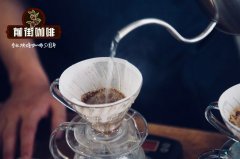Peru Yanisha Cooperative Peruvian Coffee is good?
Peru Yanisha Cooperative Peruvian Coffee is good?

Flavor description: coffee flavor with soft citrus flavor, very low acidity, medium mellow,
Caramel sweetness and balanced taste. Charming aroma and soft taste, sweet and meticulous.
Country of origin: Peru (Peru)
Production area: central Chanchamayo production area
Producer: Yanisha Cooperative (Cepro Yanesha COOP)
Variety: 100% Arabica (Tibica, Kaddura, Bourbon, Kaduai)
Altitude: 1550 to 1850 m
Treatment: washing
Rating: NCMA
Harvest time: April to September
Introduction:
This batch is from the Chanchamayo producing area in central Peru, belonging to the local Yanesha tribe.
Native Indian people, this mountain is extremely high above sea level, averaging 1550 to 1850 m
In between, they are all reserved areas of ancient Indian aborigines, with 20,000 inhabitants who raise poultry and grow them.
Agriculture and animal husbandry make a living, in order to increase family income, so they set up an Anisha cooperative CENTRAL DE.
PRODUCTORES YANESHA (CEPRO YANESHA), started growing coffee through a Dutch company
Under the Rabobank Foundation program, with the assistance of financial and technical personnel, in 2011
Start exporting one container (18 tons) to the European market, and export two more containers in 2012, by 2017
To export 13 containers and fewer high-priced special raw beans, greatly improving the income of local aboriginal families.
The Yanisha Cooperative (Cepro Yanesha COOP) is located in remote mountainous areas and is sparsely populated. It grows coffee.
All the methods are carried out in an organic (Organic Coffee) way with the assistance of the Rabobank Foundation fund.
Under the plan, there are experts to guide organic cultivation and then sell it to importers through Rabobank links, cooperatives.
Members of the coffee family grow less than 2 hectares on average, and the cooperative is surrounded by natural virgin forests and trees.
Tall, fertile land, and daily afternoon intermittent torrential rain, bring abundant rainfall and moisture, primitive
Animals and plants create natural shade trees and natural organic substances that increase soil fertility. Today Rabobank Foundation
Under the Fund Assistance Program, 70 coffee cooperatives have successfully grown and marketed coffee through this fund.
Exit. Coffee has a soft citrus flavor, very low acidity, medium mellow, caramel sweetness and balanced taste.
Charming aroma and soft taste, sweet and meticulous.
Peru is the site of the ancient Inca Empire, covering an area about 35.7 times the size of Taiwan, along with the Antilles, the highest peak in South America.
At that time, in 1533, 180 people from Spain entered the world's famous city of gold, plundering a large number of
Gold returned to Spain. Coffee was introduced in the 18th century, and the Andes stretched throughout Peru.
It spans an area of about 3 canvas 4. Peru, located in South America, covers more than half of Central America.
It is also the source of the Amazon. Peru has a population of about 28 million, of which more than 200000 are
Small farmers grow coffee with an average planting area of less than 2 hectares. Coffee is grown along the eastern side of the Andes
The planting height is meter, the coffee planting area is vast, and the producing area can be divided into three areas: the north, the middle and the south.
North District: Piura, Amazonns, San Mortin
Central: Huanuco, Junin, Pasco, Chanchamayo
Southern District: Cuzco, Ayacucbo, Apurinac, Puno, Urubamba
The main planting areas include the Chamayo Valley, the Beibu Mountain region and the Andes, located east of Lima.
On the western side of the hillside. More than 10 areas with unique coffee flavor can be divided. The annual output is about 3 million bags
Arabica coffee, all collected and washed, is mainly exported to the United States and Germany.
Up to 98% of Peruvian coffee is grown in forest areas, most of which are produced by small farmers. Most of
Peruvian coffee is grown under natural conditions, and local farmers have little money to buy fertilizers and pesticides.
Because of this, almost all locally produced coffee is made of organic beans. She is currently in South America.
The third largest exporter and the ninth largest exporter of coffee in the world. Coffee varieties are Typica.
Bourbon, Cattura, Pache .
Important Notice :
前街咖啡 FrontStreet Coffee has moved to new addredd:
FrontStreet Coffee Address: 315,Donghua East Road,GuangZhou
Tel:020 38364473
- Prev

A variety of geisha from Mayuca Manor in Cauca Valley, Colombia
Columbia Cauca Valley Mayuca Manor geisha variety flavor description: peach tea, pineapple, guava, delicate and changeable acidity, juicy sense, the end of brown sugar flavor, long aftertaste. Country of origin: Colombia (Colombia) producing area: Cauca Valley (Valle del Cauca) Caucasian (Caicedonia) Manor: Hacienda Mallorca Manor Variety
- Next

Brazil Ipanema Manor top gold series and wine sun flavor?
Brazil Ipanema Manor top gold series and wine sun flavor? Flavor description: wine, sweet wine syrup, wine-stained grapes, dark chocolate, sweet, round aromas of ripe fruit and taste: Brazil (Brazi): Sul de Minas, Serra da Mantiqueira Fazenda Rio Verde (bloc)
Related
- Detailed explanation of Jadeite planting Land in Panamanian Jadeite Manor introduction to the grading system of Jadeite competitive bidding, Red bid, Green bid and Rose Summer
- Story of Coffee planting in Brenka region of Costa Rica Stonehenge Manor anaerobic heavy honey treatment of flavor mouth
- What's on the barrel of Blue Mountain Coffee beans?
- Can American coffee also pull flowers? How to use hot American style to pull out a good-looking pattern?
- Can you make a cold extract with coffee beans? What is the right proportion for cold-extracted coffee formula?
- Indonesian PWN Gold Mandrine Coffee Origin Features Flavor How to Chong? Mandolin coffee is American.
- A brief introduction to the flavor characteristics of Brazilian yellow bourbon coffee beans
- What is the effect of different water quality on the flavor of cold-extracted coffee? What kind of water is best for brewing coffee?
- Why do you think of Rose Summer whenever you mention Panamanian coffee?
- Introduction to the characteristics of authentic blue mountain coffee bean producing areas? What is the CIB Coffee Authority in Jamaica?

